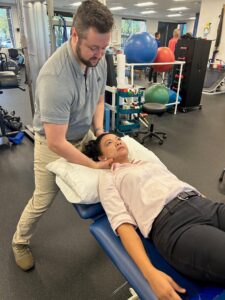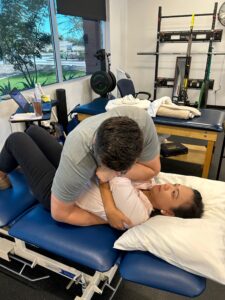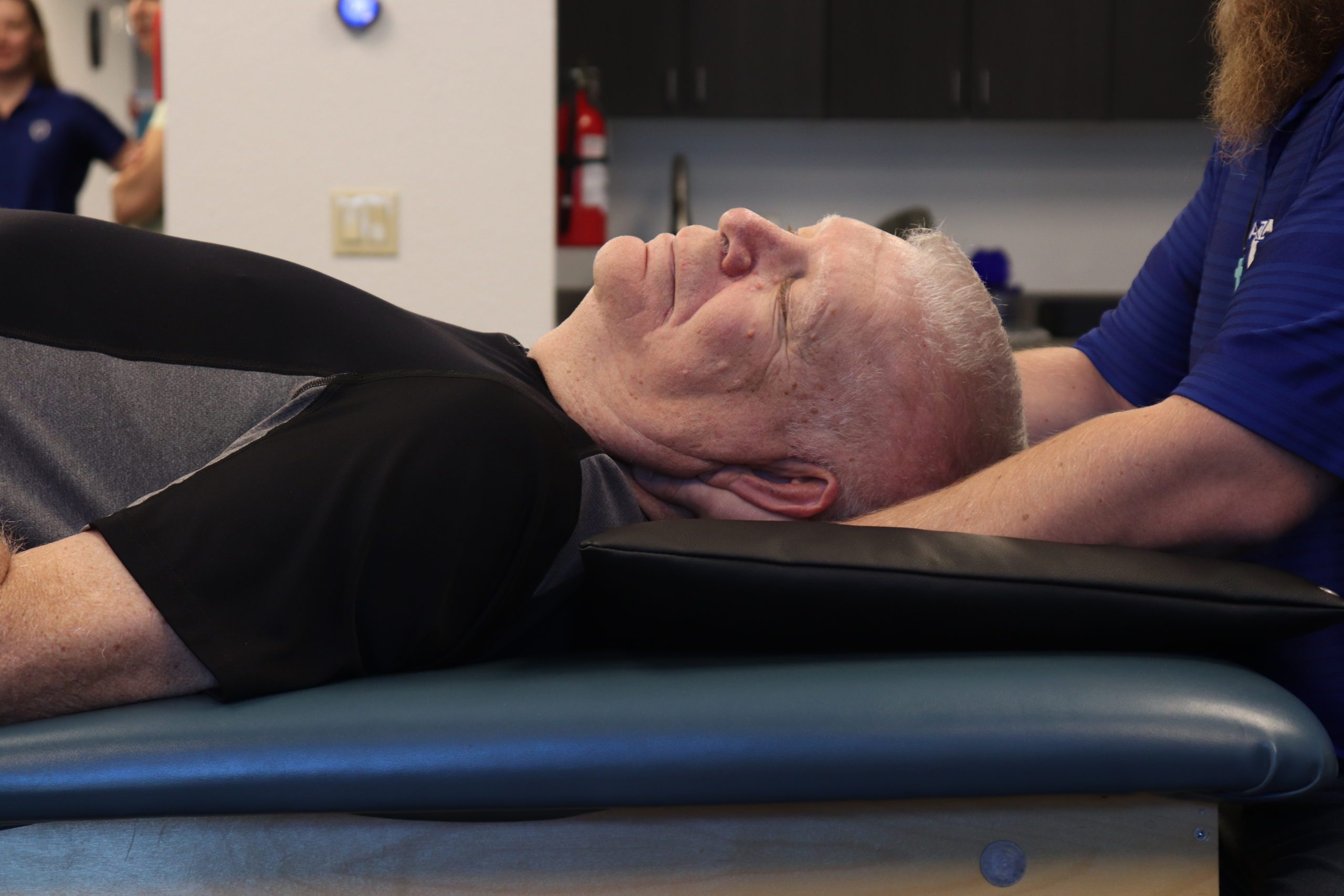What is a joint mobilization?

Joint mobilization, often called a manipulation, is a type of passive movement of a skeletal joint, using high-velocity, low amplitude (HLVA) thrusting maneuvers. Often associated with chiropractors, this technique has been used by a variety of practitioners throughout history and has evolved with time, experience and study. But did you know that a licensed physical therapist can also perform joint mobilizations?
Joint mobilizations are extremely effective for improving many types of low back pain, neck pain, sciatica, headaches, and a long list of other ailments throughout the body. If you have ever had a kink in your neck, an achy back, or a stiff joint, you probably needed spinal manipulation and didn’t even know it. Joint mobilizations don’t just pertain to the spine. There are appropriate mobilizations for almost every joint in the body. A licensed physical therapist will know when this technique is right for you or not.
Is joint mobilization safe?

Rightfully, many people are very apprehensive when it comes to manipulations. This procedure can be very dangerous if the practitioner is not educated or properly trained. Only a certified and trained professional should manipulate your joints. Questions, like if you have any unexplained or unhealed fractures of the area or if you have osteoporosis or any other bone deficiency disorder will be asked. When properly performed, a manipulation can decrease pain and promote healing.
The effects of joint manipulation
Joint manipulation helps improve joint mobility, decrease joint pain, and decrease muscle dysfunction. When a joint is not moving properly, the muscles involved in moving that joint are not functioning correctly either. This leads to muscle weakness, cramping, trigger points, and pain. When left untreated, these dysfunctions cause other issues and compensations that cause additional pain. Joint manipulations help improve these dysfunctions and decrease the symptoms.
What is that “crack” sound during joint manipulations?
The sound we hear when we manipulate a joint is referred to as joint cavitation. The reason it happens has to do with the fluid inside the joint. Most joints are surrounded by a ligamentous capsule and filled with synovial fluid that acts as a lubricant. Researchers used MRI to view a live cavitation of a finger. What they found was an air pocket formed inside the joint. They believe that when the joint capsule is stretched it creates a negative pressure inside the joint. This negative pressure is enough to convert some of the liquid synovial fluid into a gas. For a joint that is stiff and painful, this extra space and nice stretch feel very relieving. It also contributes to improving the mobility in that joint.
Who can do joint manipulations?
Spinal manipulations, commonly referred to as “cracking your back,” are historically associated with chiropractors. However, you can access these same manipulations and similar treatments through licensed physical therapists. Many people compartmentalize physical therapy as stretch and exercise and chiropractic as “popping joints.”
Physical therapists learn and demonstrate proficiency with what we call manual therapy, which includes many of these manipulations. Many physical therapists even continue their education after school and specialize in this area. If this is your preferred treatment, schedule with a physical therapist who performs manipulations. If your insurance covers physical therapy, then they cover this treatment. AzOPT currently treats patients that would normally have gone to a chiropractor and paid cash but are now able to receive the same treatment paid for by their insurance.
If you’re interested in scheduling an appointment with one of our licensed physical therapists, visit our website. We’re here to help you live and feel better!
Sources:
http://www.physio.com.sg/joint-spinal-manipulation
https://www.nccih.nih.gov/health/spinal-manipulation-what-you-need-to-know







